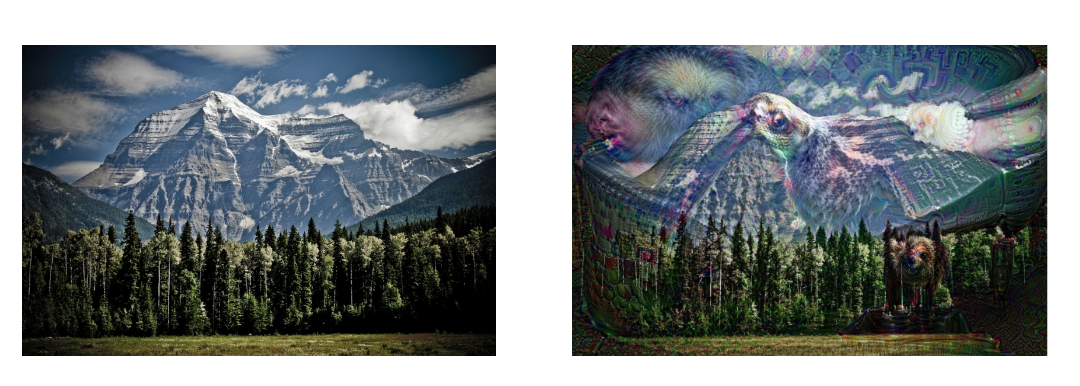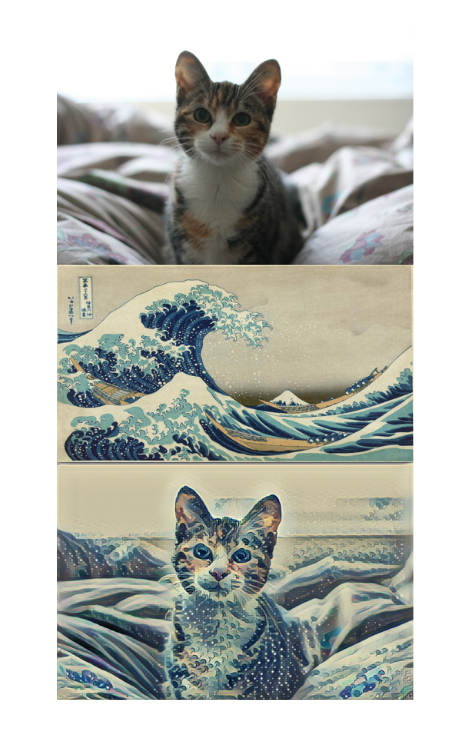28. Summary of Feature Viz
20 Summary Of Feature Viz V2 RENDER V2
Deep Dream
DeepDream takes in an input image and uses the features in a trained CNN to amplifying the existing, detected features in the input image! The process is as follows:
- Choose an input image, and choose a convolutional layer in the network whose features you want to amplify (the first layer will amplify simple edges and later layers will amplify more complex features).
- Compute the activation maps for the input image at your chosen layer.
- Set the gradient of the chosen layer equal to the activations and and use this to compute the gradient image.
- Update the input image and repeat!
In step 3, by setting the gradient in the layer equal to the activation, we’re telling that layer to give more weight to the features in the activation map. So, if a layer detects corners, then the corners in an input image will be amplified, and you can see such corners in the upper-right sky of the mountain image, below. For any layer, changing the gradient to be equal to the activations in that layer will amplify the features in the given image that the layer is responding to the most.

DeepDream on an image of a mountain.
Style Transfer
Style transfer aims to separate the content of an image from its style. So, how does it do this?
Isolating content
When Convolutional Neural Networks are trained to recognize objects, further layers in the network extract features that distill information about the content of an image and discard any extraneous information. That is, as we go deeper into a CNN, the input image is transformed into feature maps that increasingly care about the content of the image rather than any detail about the texture and color of pixels (which is something close to style).
You may hear features, in later layers of a network, referred to as a "content representation" of an image.
Isolating style
To isolate the style of an input image, a feature space designed to capture texture information is used. This space essentially looks at the correlations between feature maps in each layer of a network; the correlations give us an idea of texture and color information but leave out information about the arrangement of different objects in an image.
Combining style and content to create a new image
Style transfer takes in two images, and separates the content and style of each of those images. Then, to transfer the style of one image to another, it takes the content of the new image and applies the style of an another image (often a famous artwork).
The objects and shape arrangement of the new image is preserved, and the colors and textures (style) that make up the image are taken from another image. Below you can see an example of an image of a cat [content] being combined with the a Hokusai image of waves [style]. Effectively, style transfer renders the cat image in the style of the wave artwork.
If you'd like to try out Style Transfer on your own images, check out the Elective Section: "Applications of Computer Vision and Deep Learning."

Style transfer on an image of a cat and waves.